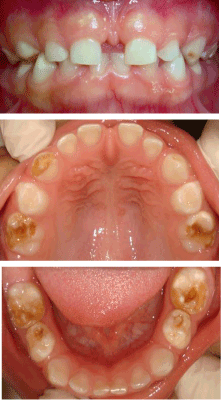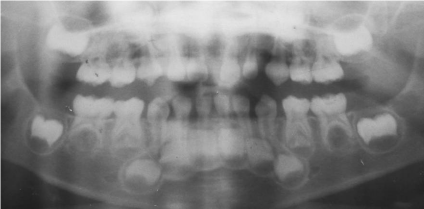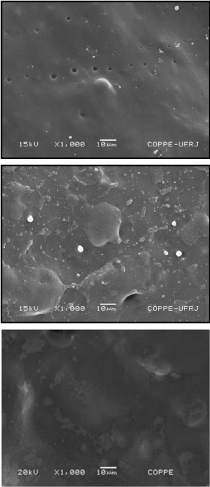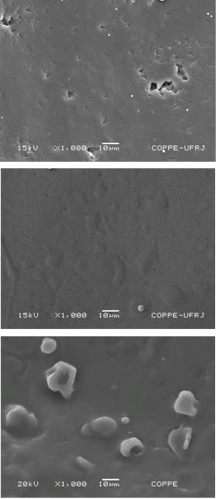|
|
| Marcia Pereira Alves dos Santos1, Daniel I Brito2, Ana Karla Buzanscki3, Thiago Isidro Vieira4, Lucianne Cople Maia5* and Laura Guimaraes Primo5 |
| 1Reference Dental Center for Sickle Cell Disease, Federal University of Rio de Janeiro, Rio de Janeiro, RJ, Brazil |
| 2Master in Pediatric Dentistry, Pediatric Dentistry and Orthodontics Department, School of Dentistry, Federal University of Rio de Janeiro, Rio de Janeiro, Brazil |
| 3Doctoral student, Pediatric Dentistry and Orthodontics Department, School of Dentistry, Federal University of Rio de Janeiro, Rio de Janeiro, Brazil |
| 4Master student, Pediatric Dentistry and Orthodontics Department, School of Dentistry, Federal University of Rio de Janeiro, Rio de Janeiro, Brazil |
| 5Associate Professor, Pediatric Dentistry and Orthodontics Department, School of Dentistry, Federal University of Rio de Janeiro, Rio de Janeiro, Brazil |
| *Corresponding author: |
Lucianne Cople Maia
Associate Professor
Pediatric Dentistry and Orthodontics Department
School of Dentistry
Federal University of Rio de Janeiro
Rio de Janeiro, Brazil
E-mail: rorefa@terra.com.br |
|
| Â |
| Received December 31, 2012; Published January 27, 2013 |
| Â |
| Citation: dos Santos MPA, Brito DI, Buzanscki AK, Vieira TI, Maia LC, et al. (2013) A Minimally Invasive Approach to Manage Dental Pain in a Child with Enamel Dental Defects: 18-Month Results. 2:596 doi:10.4172/scientificreports.596 |
| Â |
| Copyright: © 2013 dos Santos MPA, et al. This is an open-access article distributed under the terms of the Creative Commons Attribution License, which permits unrestricted use, distribution, and reproduction in any medium, provided the original author and source are credited. |
| Â |
| Abstract |
| Â |
| Developmental defect of dental enamel (DDE) such as Enamel Hypoplasia (EH) can provoke anomalies like thin enamel and exposed dentin which can act as a potential risk factor to Dentinal Hypersensitivity (DH). DH causes dental pain, and its active management involves a combination from less to more invasive therapies which will depend on the perceived severity of the condition and the number of teeth involved. Though DH is uncommon in children, this case reported a minimally invasive dentistry management of dental pain provoked by DH in a 04 years-old child with EH. After clinical, radiographical and microscopical examinations, a dental sealant for dentinal sensitivity or a combined potassium nitrate and sodium fluoride desensitizing gel were applied on symptomatic teeth after choosing them at random in a split mouth design. The efficacy of treatment was clinically assessed by tactile and thermal tests and by microscopic analyses. After two sessions, the child was symptomless and had no pain after 18 months. The microscopic images showed differences in dentinal tubules porosity and dentinal surface characteristics before and after treatment. The use of in-office topical desensitizing agents was an excellent minimally invasive approach to manage child’s dental pain as a consequence of DH. |
| Â |
| Keywords |
| Â |
| Enamel; Dentin sensitivity; Dentin desensitizing agents |
| Â |
| Introduction |
| Â |
| Developmental defects of dental enamel (DDE), such as enamel hypoplasia, demarcated opacities and diffuse opacities, are structural anomalies in primary and/or permanent dentitions [1] caused by systemic, local or inherited disorders [2]. Clinical alterations during the pre-natal, the neonatal or the postnatal periods provoke defects, irregularities or opacities on the surface of enamel due to an incomplete or an inadequate training of organic matrix of the enamel [2]. Prevalence of 6% and 27% respectively, for dental hypoplasia and enamel opacities occur in children between 4 to 5 years-old. In addition, second lower and upper molars, respectively, are the deciduous teeth more affected [3]. Loss of enamel structure, as it occurs in the enamel hypoplasia, can expose dentinal tubules to the oral environment which leads to predisposition to dentinal hypersensitivity [4-10]. |
| Â |
| As proposed by Canadian Advisory Board on Dentin Hypersensitivity [4] dentinal hypersensitivity is a short sharp pain arising from exposed dentin in response to external stimuli, typically thermal, evaporative, tactile, osmotic or chemical that cannot be ascribed to any other dental defect or dental pathology [4,5]. It results from attrition, abrasion, erosion, abfraction or dental developmental anomalies [4]. According to the Brannstrom’s hydrodynamic theory the fluid movements caused either by temperature, physical or osmotic changes provoke the displacement of odontoblasts in the dentin tubules [10]. As postulated by previous study [10], fluid movements lead to neural discharge by stimulating a baroreceptor, which leads to neural discharge and consequently, dental pain. Based on Brannstrom’s hydrodynamic theory, it was proposed two mechanisms to desensitize dentine [7,10]: reducing dentinal permeability by reducing stimulievoke fluid shifts in the dentinal tubules or reducing the ability of the intradental nerves to respond to fluid shifts [7,10]. |
| Â |
| According to some authors [4,5,8,9], dental professionals can deliver a wider range of desensitizing treatment [5] depends on the perceived severity of the dental pain and the number of teeth involved. Taking into account the minimally invasive dentistry, topical desensitizing agents should be chosen because of their easy handling, safety and effectiveness [4,5,8,9,11-15]. Thus, the objective of this case report was to relate the management of dentinal hypersensitivity in a 4 years-old child with dental enamel defects using in-office topical desensitizing agents with different mechanisms of action. |
| Â |
| Case Report |
| Â |
| A 04-year-old girl, accompanied by her guardian, attended the Pediatric Dentistry clinic at school of Dentistry of a public institution in Brazil with health concerns related to dental pain by eating sweet foods, drinking soft drinks or juices and by brushing her teeth. |
| Â |
| She was born by Caesarean section at 38 weeks with norm weight, from non-consanguineous Caucasian parents. Her mother suffered from hyperthyroidism at the beginning of pregnancy. Child’s medical history included recurrent otitis and fever episodes, from eight months to 24 months, which lead her to take Amoxicillin-containing syrup for a long period; she was also hospitalized at the age of eight months for one week due to bronchitis crisis. |
| Â |
| An oral examination showed a complete deciduous dentition with good oral hygiene, she had opacities in lower canines and enamel hypoplasia in upper canines, second primary molars and lower primary molars (Figures 1A-C). Dental caries or periodontal disease was absent. It was noted a degraded glass ionomer cement restoration in the left lower primary tooth. According to her guardian, all lower primary molars received restorations which were lost in a short period of time. During the dental exam, the child complained of pain when an air syringe blow dried the primary molars. She was also showed an uncooperative behavior according to Frankl behavior rating scale [16]. Panoramic radiograph (Figure 2) showed changes on the density and on the thickness of enamel in canines, second primary molars and lower primary molars with no signs of pulp or periodontal pathology. Taking all into account, we diagnosed the clinical condition as dentinal hypersensitivity pathology and in order to do the immediate minimally management of the dentinal hypersensitivity, we decided to apply topic desensitizing agents in-office. |
| Â |
|
|
Figure 1: A: Frontal view of developmental defects of dental enamel in canines deciduous teeth. There are opacities in lower canines and enamel hypoplasia in upper canines. B: Enamel hypoplasia in upper second primary molars. C: Enamel hypoplasia in all lower primary molars and lower second with unsuccessful conventional glass ionomer cement restoration. |
|
| Â |
|
|
Figure 2: Panoramic radiograph revealed a reduction of enamel thickness on the crown of all canine teeth and enamel structural anomalies in upper second primary molars and all lower primary molars. The enamel also showed variation in density. There are no signs of pulpar or periradicular pathology. |
|
| Â |
| For that, we selected two desensitizing agents, a dental sealant for dentine sensitivity (Seal and Protect - Dentsply, Rio de Janeiro, Brazil) and a potassium nitrate and sodium fluoride desensitizing gel (Dessensibilize KF 2% - FGM, Sao Paulo, Brazil) which were applied in a split mouth design randomly chosen by coin toss (Table 1). In order to support the clinical findings, before and after the therapy, we made impressions from upper and lower arches with an addition-type polyvinylsiloxane (Adsil-Vigodent, Rio de Janeiro, Brazil) to obtain epoxy resin replica models to be analyzed by scanning electron microscope at 1 kv. To evaluate the same area, the inner facial portions of lower second primary molars were analyzed. The efficiency of the treatments was assessed at two examination periods: immediately and 18 months after application. |
| Â |
|
|
Table 1: Specifications of dessensibilisers used in this case. |
|
| Â |
| Patient received diet counseling to avoid acid foods, acid juices and soft drinks. There was an instruction for an adequate oral hygiene procedure but there is no indication of any desensitizing tooth-paste. |
| Â |
| After one week of desensitizing therapy, the child and her guardian reported relief of pain and two weeks later, the dentinal hypersensitivity disappeared. After 18 months of follow-up, the child remained without painful symptoms. The SEM images supported the clinical findings. Before treatment, there were open dentinal tubules (Figures 3A and 4A). After immediate treatment, both agents showed high sealing ability. They created a layer which occluded the dentinal tubules (Figures 3B and 4B) which remains after a period of 18 months (Figures 3C and 4C). |
| Â |
|
|
Figure 3: Before treatment, it could be seen a dentine hypersensitivity with opened dentinal tubules. (A) After one week of treatment, it could be seen a dentine-Seal & Protect complex layer. (B) Sealed the majority of dentinal tubules after one week which remained after 18 months. (C) During this period, the complex layer suffered from both mechanical and chemistry wear, producing a smoother surface (C). |
|
| Â |
|
|
Figure 4: Before treatment, it could be seen opened dentinal tubules under the weakly attached smear layer (A) leading to dentine hypersensitivity; After one week of treatment with Dessensibilize, a homogeneous but irregular surface could be seen in that no opened tubules were found. (B) After 18 months this surface showed some pattern of wear and exhibited spherical particles on the surface derived from nitrate-potassium-sodium-fluoride components (C). |
|
| Â |
| Discussion |
| Â |
| The crown stage of canines and primary molars development were around the 12th to the 14th week of pregnancy. However, if hormonal changes such as Hyperthyroidism occur, it can provoke enamel defects by reducing or losing the quantity of the enamel [2,17]. In the present case, mother’s hyperthyroidism probably acted as predisposing factor to dentinal hypersensitivity in a child as a consequence of enamel dental defects. |
| Â |
| Although the prevalence of dentinal hypersensitivity in adults presents a large variation [5,8,9] and the most than 90% of hypersensitivity surface are at the cervical margin on the buccal or labial aspects of teeth as a consequence of periodontitis [5], the prevalence of dentinal hypersensitivity in children population is not reported in previous reviews [5,8,9]. It is of concern that dentinal hypersensitivity is a very unpleasant condition, limiting the daily habits of patients, such as the possibility of eating/drinking different kinds of foods and drinks [4,5], which contributes to reduce the quality of life of individuals. |
| Â |
| The clinical management of dentinal hypersensitivity is dependent on the degree of tooth structure involvement and intensity of the compromised dentinal hypersensitivity. In reviewing the evidence behind all treatment modalities, the Canadian Advisory Board on Dentin Hypersensitivity recommended brushing twice daily with desensitizing toothpaste as the first line of treatment [4] because it is convenient, inexpensive, non-invasive and reversible treatment choice. Moreover, it can be initiated easily by patients at home and, with ongoing use, can prevent pain from returning [4,5]. However, this strategy is recommended for adults with cervical hypersensitivity and not for children. Furthermore, formulations of toothpaste are not specific to children, and its therapeutic effect is delayed and for a limited period of time [15]. On the other hand, when using desensitizer tooth paste, there is a possibility to increase the dentinal hypersensitivity by the dental wear [18,19] once some evidences suggests that abrasion by some toothpastes associated with erosion by dietary acids open the tubules system and provoke sensitivity. For this reason, in this report such approach was not performed. |
| |
| Â |
| Fluoride varnishes act as another minimally invasive approach for dentinal hypersensitivity management and additionally, they help to prevent and control dental caries as suggested by others researchers [5]. However, it is important to point out that Calcium fluoride (CaF2) precipitates on the outer dentin surface, and seems to be easily removed away from this surface by saliva and/or by tooth brushing. This phenomenon can reopen the dentinal tubules and trigger dentinal hypersensitivity [7]. For this reason, the authors of the present study selected two topical desensitizing agents with different mechanisms of action in order to lead to an immediate and a long lasting desensibilization. |
| Â |
| Both desensitizing agents were able to relieve dental pain in the present case report. The self-etching light curing dental varnish showed many advantages in relation to Potassium Nitrate with Sodium Fluoride ion gel because it requires only one dental appointment to be applied (Table 1). It promoted the occlusion of dentin tubules by resin tags formations and by the thin layer of polymerized resin at the surface leading to an immediate (Figure 3B) and a long lasting desensibilization (Figure 3C). Differently, Potassium Nitrate with Sodium Fluoride ion gel acted as nerve-inhibiting agent as proposed by previous study [7]. Furthermore, the occlusion of the dentinal tubules by the Sodium Fluoride ion (2%) action decreased the dentinal hypersensitivity. The dentinal tubules seemed to be occluded by round Calcium Fluoride crystals deposited on the dentinal surface (Figures 4B and 4C) what reduces the fluid flow to the pulp. Another possible explanation for the long desensitizing action of Sodium Fluoride ion is the biochemical blocking of neural transmission by labile excess fluoride in the organic matrix of dentin [7]. But, this mechanism needs further investigations. |
| Â |
| According to Canadian Advisory Board on Dentin Hypersensitivity [4], dentine hypersensitivity in children is an important problem that needs management, especially since pain is involved. It suggests the least invasive treatments are usually advocated first followed by the professionally applied treatments [4]. Many authors used resin-based restorations to treat dentinal hypersensitivity. However, considering dental enamel defects, the hypomineralized dental substrate is fragile, soft and can break easily. Thus, a weak long-term bonding to dentin could limit the success rate of the restorations placed in these teeth [20,21]. Besides, it is important to remember that the patient had a non-cooperative behavior [16]. |
| Â |
| In the present case of dental pain provoked by enamel defects, the use of in-office topical desensitizing agents was an excellent minimally invasive approach to manage child’s dental pain as consequence of dentinal hypersensitivity. |
| Â |
| |
| References |
| Â |
- Suckling GW, Nelson DG, Patel MJ (1989) Macroscopic and scanning electron microscopic appearance and hardness values of developmental defects in human permanent tooth enamel. Adv Dent Res 3: 219-233.
- Seow WK (1991) Enamel hypoplasia in the primary dentition: a review. ASDC J Dent Child 58: 441-452.
- Slayton RL, Warren JJ, Kanellis MJ, Levy SM, Islam M (2001) Prevalence of enamel hypoplasia and isolated opacities in the primary dentition. Pediatr Dent 23: 32-36.
- Canadian Advisory Board on Dentin Hypersensitivity (2003) Consensus-based recommendations for the diagnosis and management of dentin hypersensitivity. J Can Dent Assoc 69: 221-226.
- Orchardson R, Gillam DG (2006) Managing dentin hypersensitivity. J Am Dent Assoc 137: 990-998.
- Jacobsen PL, Bruce G (2001) Clinical dentin hypersensitivity: understanding the causes and prescribing a treatment. J Contemp Dent Pract 2: 1-12.
- Markowitz K, Pashley DH (2007) Personal reflections on a sensitive subject. J Dent Res 86: 292-295.
- Bartold PM (2006) Dentinal hypersensitivity: a review. Aust Dent J 51: 212-218.
- West NX (2008) Dentine hypersensitivity: preventive and therapeutic approaches to treatment. Periodontol 200048: 31-41.
- Brannstrom M, Linden LA, Astrom A (1967) The hydrodynamics of the dental tubule and of pulp fluid. A discussion of its significance in relation to dentinal sensitivity. Caries Res 1: 310-317.
- Pamir T, Ozyazici M, Baloglu E, Onal B (2005) The efficacy of three desensitizing agents in treatment of dentine hypersensitivity. J Clin Pharm Ther 30: 73-76.
- Olusile AO, Bamise CT, Oginni AO, Dosumu OO (2008) Short-term clinical evaluation of four desensitizing agents. J Contemp Dent Pract 9: 22-29.
- Fu B, Shen Y, Wang H, Hannig M (2007) Sealing ability of dentin adhesives/desensitizer. Oper Dent 32: 496-503.
- Conforti N, Battista GW, Petrone DM, Petrone ME, Chaknis P, et al. (2000) Comparative investigation of the desensitizing efficacy of a new dentifrice: a 14-day clinical study. Compend Contin Educ Dent Suppl 17-22.
- Poulsen S, Errboe M, Lescay Mevil Y, Glenny AM (2006) Potassium containing toothpastes for dentine hypersensitivity. Cochrane Database Syst Rev 3: CD001476.
- Frankl L, Hellman I (1962) Symposium on child analysis. The ego's participation in the therapeutic alliance. Int J Psychoanal 43: 333-337.
- Seow WK (1997) Clinical diagnosis of enamel defects: pitfalls and practical guidelines. Int Dent J 47: 173-182.
- Addy M (2005) Tooth brushing, tooth wear and dentine hypersensitivity--are they associated? Int Dent J 55: 261-267.
- Holbrook WP, Ganss C (2008) Is diagnosing exposed dentine a suitable tool for grading erosive loss? Clin Oral Investig 12: S33-S39.
- Ritter AV, de LDW, Miguez P, Caplan DJ, Swift EJ Jr (2006) Treating cervical dentin hypersensitivity with fluoride varnish: a randomized clinical study. J Am Dent Assoc 137: 1013-1020.
- Alex G (2009) Adhesion. Adhesive dentistry: the good, the bad, and the ugly. Compend Contin Educ Dent 30: 553-556.
|
| Â |
| Â |




